+ intro by BFI National Archive curator Bryony Dixon
It’s 100 years since a group of London cinephiles founded The Film Society. From its first screenings in October of that year, the society was hugely influential – expanding the appreciation of film as an art form, sparking-off the establishment of UK-wide film societies and providing a forum for the idea of developing the film archive. To celebrate the centenary, here are three eye-opening avant-garde films, all filmed in Paris. This programme is made up of prints deriving directly from materials acquired by the Film Society in the 1920s and 30s, sent for sake-keeping to the BFI National Archive during the Second World War.
Rien que les heures
Rien que les heures, the first film to attempt to show the ordinary daily life of a city, is well worth a fresh look with the eye of today. A great deal about it helps to illuminate Cavalcanti’s career as a whole: the dramatic approach, the social consciousness in contrasting the lives of rich and poor (not in fact the prerogative of the Grierson school), the surrealism (for as Cavalcanti points out, the French avant-garde ‘included all the surrealist tendencies of that time’). Its reputation suffered an initial neglect because its thunder was stolen by Ruttmann’s Berlin, completed later but shown first in Britain and America. In subsequent years, like so much to which the British documentary movement laid special claim, it acquired that aura of potential boredom which comes of being taken too seriously. According to Paul Rotha, for instance, ‘Cavalcanti may have failed, at the time, to bring a full social realisation’ to his aim which, again according to Rotha, was to show ‘Man against the Street, against the turmoil of the City.’ The conscious aim seems to have been a little different.
‘Rien que les heures was an accident,’ says Cavalcanti, ‘because my first film (Le Train sans yeux) was shot in the studios in Germany and the producers didn’t pay the bills and the film was held up by the studios, who wouldn’t release the negative for copies because they hadn’t been paid. So I got a few friends together, and we said, “We must do a film at all costs, because we are going to miss this winter. My film is not coming out. People will think the worst.” We made a script, and it was the cheapest film you could imagine. It cost at the time 35,000 old francs, which is nothing at all. We had no studio. We shot everything in the streets, and of course we cut it very quickly and it came out as it was. The idea was that films were always about faraway places, about the sunsets over the Pacific etc, and nobody had an idea that life in the town in which you lived was interesting. That was made clear in Rien que les heures … and it immediately came to look like a social document. It is a clumsy social document, but it is a social document about the lack of work, about the lives in miserable places. It had a lot of trouble with the censors, you know.’
Elizabeth Sussex, ‘Cavalcanti in England’, Sight and Sound, Autumn 1975
Entr’acte
In 1924, Francis Picabia teamed with composer Erik Satie and the Ballet Suédois’s Jean Börlin to create the ballet Relâche. He also decided to produce a short film for the interval and pooled ideas with Satie and René Clair, who had just made his directorial debut with the sci-fi farce Paris qui dort (1924).
While Picabia sought to rile the surrealists by creating a work of instantist spontaneity, Clair imposed his sense of self-reflexive mischief by spicing up the vaguely plot-driven action with uniquely cinematic transformations, superimpositions and shifts in speed. Consequently, the absurdist gags involving Man Ray and Marcel Duchamp’s chess game, a bearded ballerina, a huntsman and an ostrich egg, and the climactic hearse chase are interspersed with defamiliarising views of Parisian landmarks – all in order to justify Picabia’s claim: ‘Entr’acte does not believe in very much, in the pleasure of life, perhaps; it believes in the pleasure of inventing, it respects nothing except the desire to burst out laughing.’
David Parkinson, bfi.org.uk
Ménilmontant
Teasing a narrative line out of the incredible complex of images and styles that constitute Menilmontant may be considered an act of extreme perversity. For this rare surviving example of the work of the Russian-born Dimitri Kirsanov (1899-1957) follows none of the traditional story-telling practices. Its melodramatic plot, almost worthy of Griffith, is caught on the wing in a flurry of hand-held camera shots, incisive montages and elliptical progressions recalling the comments of Jean Epstein, Kirsanov’s colleague in the French avant-garde, about the bogus qualities of all narrative films: ‘There are no stories. There have never been stories. There are only situations without tail or head; without beginning, middle and end.’
Menilmontant is the perfect anthology of truncated situations. The opening act of violence, for instance, is presented without a clear identification of murderer or motive: Kirsanov – clearly a director with an imaginative, if magpie, mind – is interested in the kinaesthetic impact of his jagged images, where the only moments of rest are provided by menacing close-ups of the axe before and after the frenzied, blurred murder. Continuity is equally wayward. Time progresses in leaps and bounds, backwards and forwards; all treatment of the baby’s birth (or indeed conception) is omitted in favour of the sudden image of mother and bundle standing outside a hospital door. Kirsanov uses the story, in fact, only as a structural device to hold together his bewildering collection of contemporary avant-garde styles, ranging from the French impressionist school (evident again in his own Brumes d’automne) and Russian montage to the psychological probings of the German cinema. Yet the familiar narrative line describing the seduction and deprivation of the innocent in the big city proves remarkably resilient, despite the stylistic fireworks.
Geoff Brown, Monthly Film Bulletin, October 1981
Rien que les heures
Director: Alberto Cavalcanti
Production Company: Néo Film
Producer: Pierre Braunberger
Assistant Director: André Cerf
Screenplay: Alberto Cavalcanti
Adaptation: Alberto Cavalcanti
Director of Photography: Jimmy Rogers
Editor: Alberto Cavalcanti
Art Director: M. Mirovitch
Musical Accompaniment: Yves de la Casinière
Cast:
Clifford McLaglen
Philippe Hériat (pimp)
Nina Chouvalowa
Blanche Bernis (prostitute)
France 1926
40 mins
35mm
Entr’acte
Director: René Clair
Production Company: Ballets Suédois
Producer: Rolf de Maré
Assistant Director: Georges Lacombe
Scenario: Francis Picabia
Adaptation: René Clair
Photography: Jimmy Berliet
Editor: René Clair
Music: Erik Satie
Cast:
Francis Picabia
Erik Satie
Marcel Achard
Jean Börlin
Georges Charensol
Marcel Duchamp
Man Ray
Rolf de Maré
Pierre Scize
Touchagues
Mlle Friis
Georges Auric
Roger Le Bon
Mamy
France 1924
22 mins
35mm
Menilmontant
Filmmaker: Dimitri Kirsanoff
Production Company: Dimitri Kirsanov
Photography: Léonce Crouan, Dimitri Kirsanoff
Cast:
Nadia Sibirskaïa (younger sister)
Yolande Beaulieu (elder sister)
Guy Belmont (young man)
Jean Pasquier
Maurice Ronsard
France 1926
38 mins
35mm
Live piano accompaniment by John Sweeney
Total running time: 100 mins
SIGHT AND SOUND
Never miss an issue with Sight and Sound, the BFI’s internationally renowned film magazine. Subscribe from just £25*
*Price based on a 6-month print subscription (UK only). More info: sightandsoundsubs.bfi.org.uk

BFI SOUTHBANK
Welcome to the home of great film and TV, with three cinemas and a studio, a world-class library, regular exhibitions and a pioneering Mediatheque with 1000s of free titles for you to explore. Browse special-edition merchandise in the BFI Shop.We're also pleased to offer you a unique new space, the BFI Riverfront – with unrivalled riverside views of Waterloo Bridge and beyond, a delicious seasonal menu, plus a stylish balcony bar for cocktails or special events. Come and enjoy a pre-cinema dinner or a drink on the balcony as the sun goes down.
BECOME A BFI MEMBER
Enjoy a great package of film benefits including priority booking at BFI Southbank and BFI Festivals. Join today at bfi.org.uk/join
BFI PLAYER
We are always open online on BFI Player where you can watch the best new, cult & classic cinema on demand. Showcasing hand-picked landmark British and independent titles, films are available to watch in three distinct ways: Subscription, Rentals & Free to view.
See something different today on player.bfi.org.uk
Join the BFI mailing list for regular programme updates. Not yet registered? Create a new account at www.bfi.org.uk/signup
Programme notes and credits compiled by Sight and Sound and the BFI Documentation Unit
Notes may be edited or abridged
Questions/comments? Contact the Programme Notes team by email

